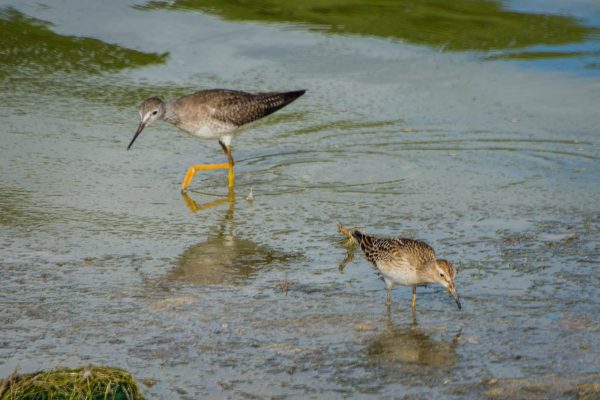
Every fall, birds come to St. Martin—thousands of individual birds from dozens of different species. These migratory birds come from North America. As it gets colder up there and food begins to get scarce, they head to the Caribbean. Many of them will stay until April or May.

This year, Hurricane Irma hit St. Martin with a fury, right during the migration season. Some birds had already arrived here when the storm hit. Others were caught in the storm while they were flying. Many birds made their migratory flights after, arriving on an island with heavy damage. What happened to all these birds?
Migratory birds that were already here may have left before the storm. Although they can’t read the weather report, birds can sense changes in air pressure. Feeling the storm coming, they may have traveled to another island out of Irma’s path. For these long distance voyagers, hopping over to a nearby island is easy.
Although birds tend to avoid storms, some do get caught in hurricanes. They can be trapped inside the calm eye of the hurricane with high winds forming a wall around them. In some cases, there are so many birds they can be seen in the radar images of the storm. When this happens, birds that survive may end up well off course.

Thanks to tiny satellite trackers small enough for a bird to wear, we have actually seen what happens when birds get stuck in a hurricane. Several Whimbrels—a medium-sized wading bird that eats small crabs—have been monitored as they passed through major storms. Some skirted the edge of a hurricane, while others struggled against strong winds for hours before eventually making it out. After their ordeal, they will often stop to rest, even if they are not at their usual destination.
Many birds have also arrived after Irma. Visiting St. Martin’s ponds, one can see a variety of different species. Shorebirds, like the Whimbrel, Lesser Yellowlegs, Spotted Sandpiper and Black-bellied Plover can be seen foraging along the shore. Out in the water, Blue-winged Teals mingle with local ducks. High above, the Osprey hunts for fish.
Although most of our usual migratory friends are here, it does look like they are fewer in number this year. Some may have found less food if they arrived right after the passing of Irma. Others may have been disturbed by human activity. Large piles of debris were made near many of the ponds, with the constant activity of heavy machinery.
For those birds that are here, rapidly recovering ponds and mangroves should offer quite the buffet of fish, crab and other foods. We welcome them back to our island to share in its recovery.
